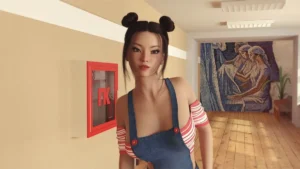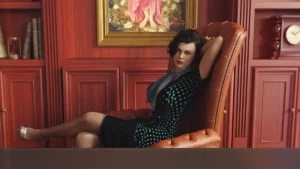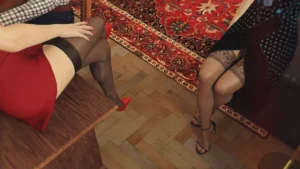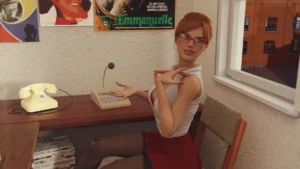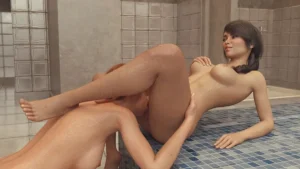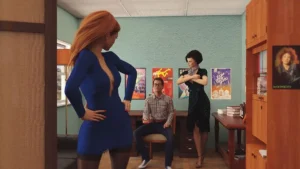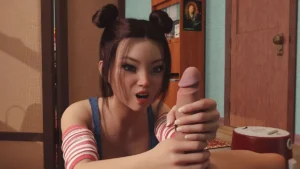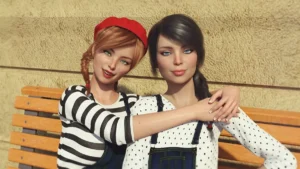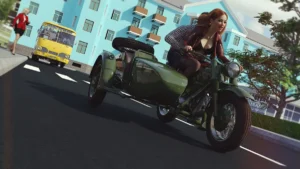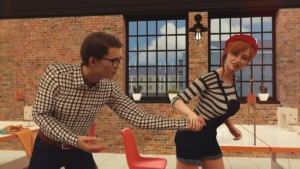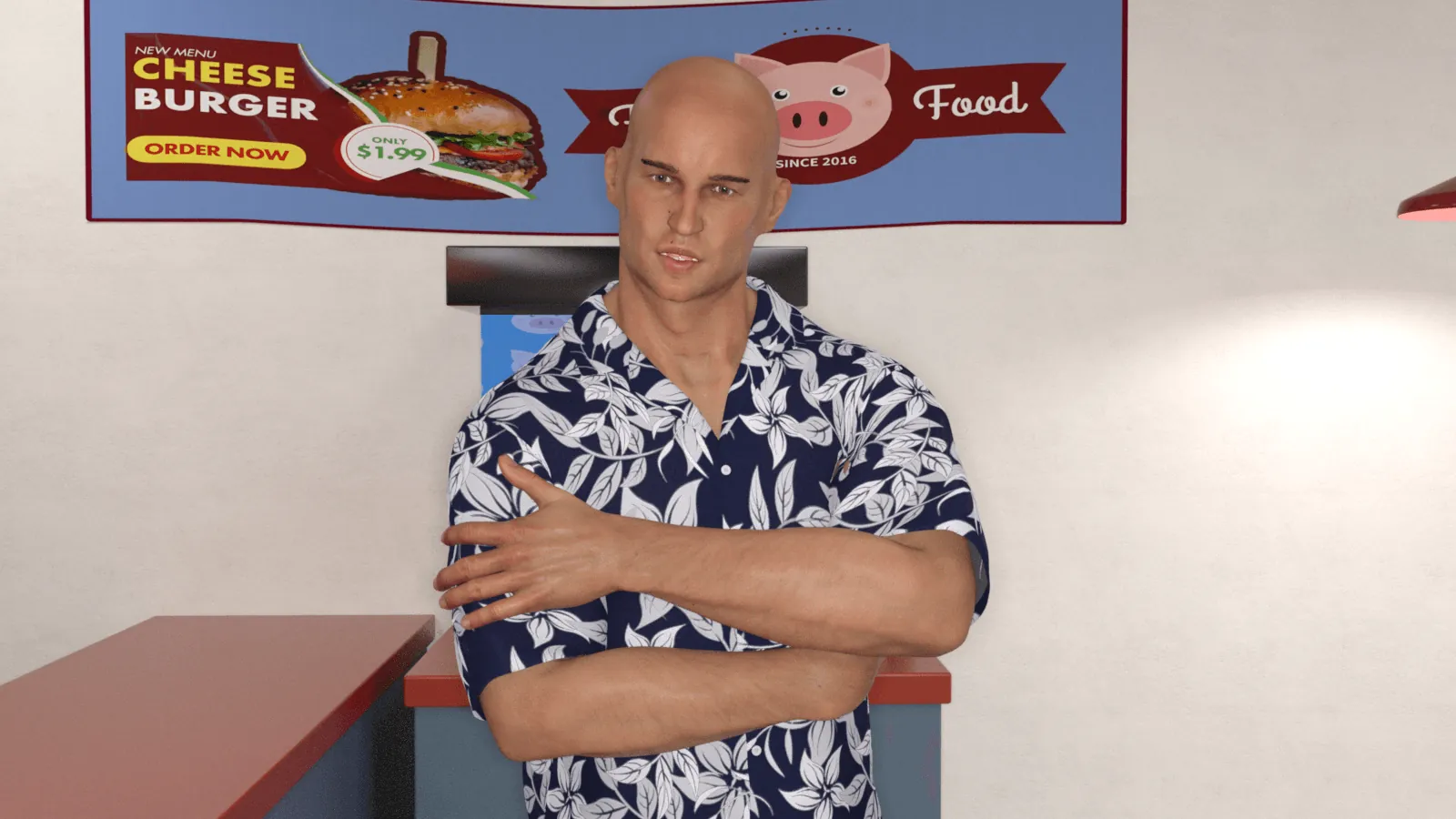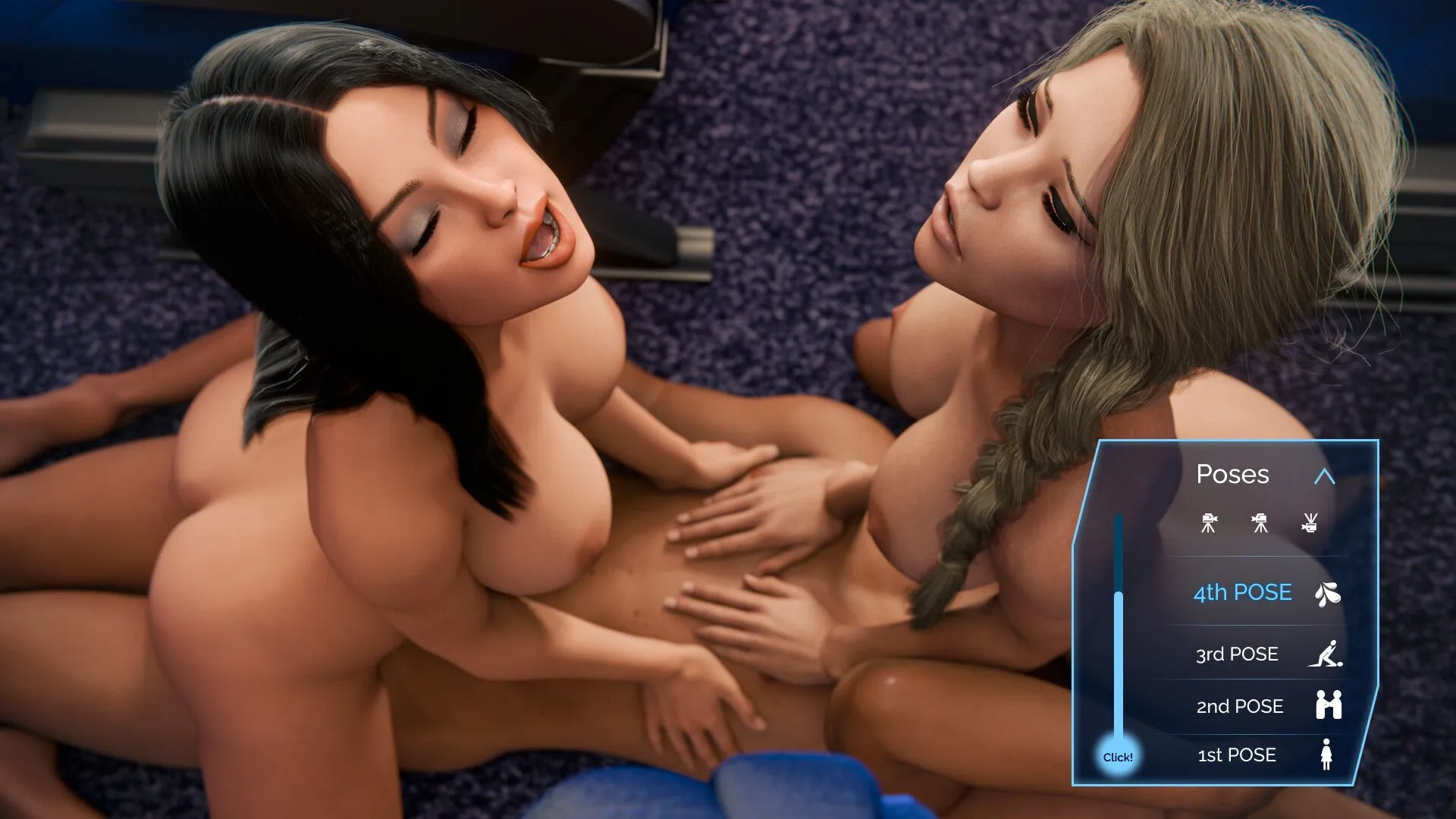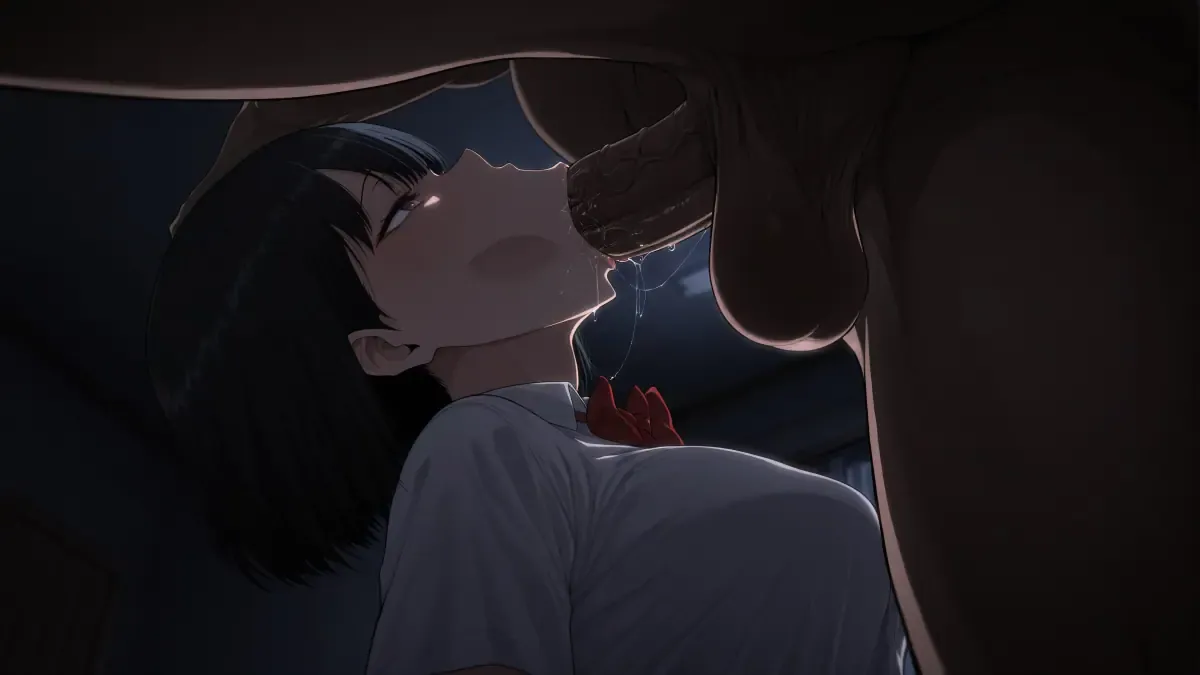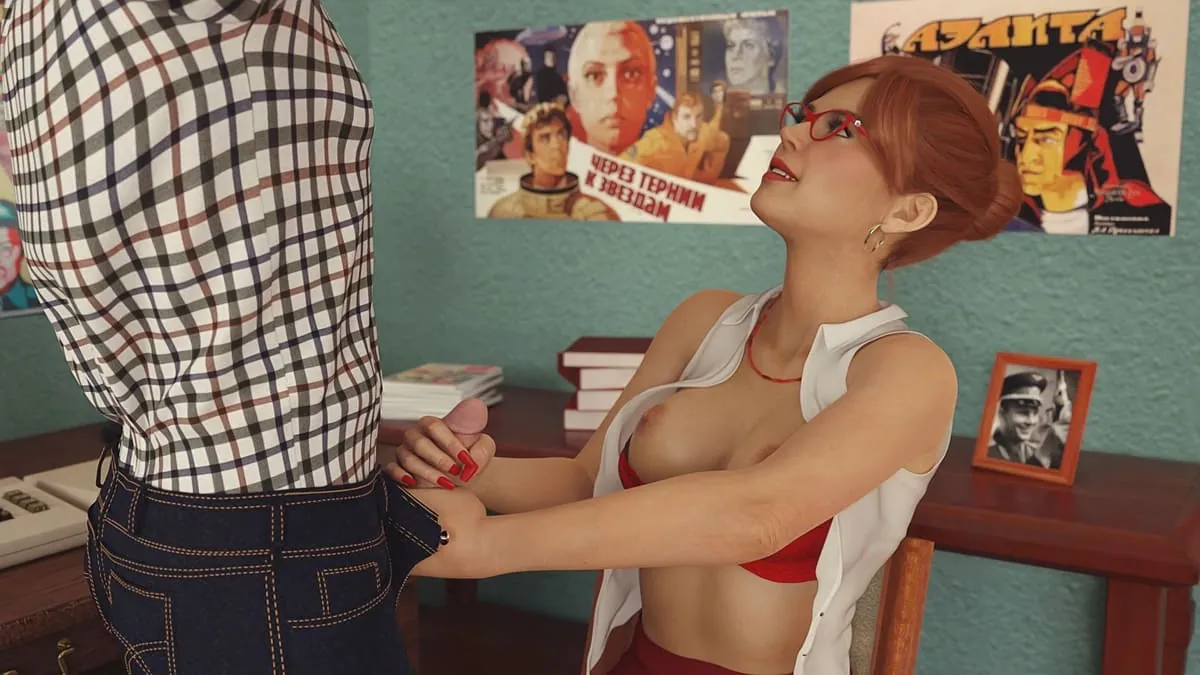
RSSU – Retro Style Soviet Undies – Case#1 Ithaca Project
Play RSSU – Retro Style Soviet Undies – Case#1 Ithaca Project
RSSU – Retro Style Soviet Undies – Case#1 Ithaca Project review
Exploring the Unique 80s USSR Visual Novel Experience
RSSU – Retro Style Soviet Undies – Case#1 Ithaca Project offers a nostalgic dive into the late 1980s USSR through a captivating visual novel format. Set in the city of Maryino, Moscow region, this game follows Artem, a young graduate starting his first job at a garment factory, where unexpected adventures and intriguing encounters with Soviet women await. This article explores the game’s unique blend of retro aesthetics, storytelling, and gameplay that sets it apart in its genre.
Immersive 80s USSR Setting in RSSU – Retro Style Soviet Undies
Stepping into RSSU – Retro Style Soviet Undies – Case#1 Ithaca Project is like opening a time capsule sealed in the late 1980s. 🕰️ If you’ve ever wondered what daily life felt like during those final, fascinating years of the Soviet Union, this game is your ticket. It’s not just a backdrop; the 80s USSR game setting is a core character, meticulously crafted to pull you into its unique world. From the moment you boot it up, you’re transported, and the attention to detail in everything from the wallpaper patterns to the distant sound of a trolleybus is absolutely staggering.
I remember my first playthrough; I was immediately struck by a wave of unexpected familiarity. It wasn’t from personal experience, but from old family photos and stories. The game captures an atmosphere that feels both authentically foreign and strangely intimate. This commitment to building a genuine Soviet Union game atmosphere is what sets this experience apart from any other visual novel out there. 🎮
How the Game Captures the Late 1980s Soviet Atmosphere
So, how does the RSSU – Retro Style Soviet Undies – Case#1 Ithaca Project achieve this incredible sense of place? It’s all in the subtle, often overlooked details. The developers didn’t just recreate the big, iconic landmarks; they rebuilt the soul of the era. The Soviet Union game atmosphere is thick with a specific blend of communal living, quiet optimism, and the underlying hum of a system in its twilight years.
You’ll feel it in the game’s sound design—the gentle crackle of a vinyl record playing a popular synth-pop tune, the distinct clang of a radiator in a panel apartment, and the specific cadence of conversations in a neighborhood bread line. 🎶 These aren’t just background noises; they’re auditory artifacts. The RSSU visual style plays a huge role here, employing a color palette that feels both vibrant and slightly faded, much like the photographs from that time. It’s a world where bold red banners coexist with peeling paint, creating a powerful Soviet nostalgia game experience that tugs at your heartstrings.
The genius lies in showing, not telling. You understand the era by interacting with it: waiting in a queue, navigating the social dynamics of a communal apartment, or trying to get a broken appliance fixed through official channels. It’s this interactive immersion that makes the 80s USSR game setting so compelling and believable.
Exploring Maryino: The Game’s Unique Location
Forget Red Square and the Kremlin; the real heart of this story beats in the residential districts of Moscow, specifically in the Maryino Moscow game location. 🏢 Choosing Maryino as the primary setting is a masterstroke. This microdistrict, a massive expanse of nearly identical concrete panel buildings, is the perfect canvas to depict ordinary Soviet life. It’s here that the game’s narrative truly finds its footing.
Navigating the Maryino Moscow game environment is an experience in itself. You’ll explore:
* The sprawling, often-deserted courtyards between the towering Khrushchyovka and Brezhnevka apartment blocks.
* The local univermag (department store), where the shelves tell a story of their own.
* The essential kvass tanker truck on a hot summer day, a social hub in its own right.
This isn’t a glamorized version of history. It’s a respectful and authentic recreation of a specific place and time. The Maryino Moscow game location feels lived-in and real. You get a sense of the scale, the architecture, and the social fabric of a typical late-Soviet neighborhood. It grounds the entire 80s USSR game setting in a relatable, tangible reality that is far more impactful than any grand, historical monument could be.
Retro Fashion and Technology: Bringing the Era to Life
If the settings provide the stage, then the retro Soviet fashion and 1980s Soviet technology are the star performers. The developers have an almost obsessive eye for the material culture of the period, and it shows in every pixel. Let’s talk style first. The retro Soviet fashion in RSSU is a glorious explosion of DIY creativity and imported influences. You’ll see characters rocking:
- Bright, almost neon-colored windbreakers and track suits 🧥
- Chunky knit sweaters and iconic leg warmers
- Denim jeans that were the ultimate status symbol
- Unique hairstyles that tried to mimic Western trends with limited resources
This isn’t just cosmetic; clothing choices often reflect a character’s personality, aspirations, and social standing within the game’s world.
On the tech side, the 1980s Soviet technology is seamlessly integrated into the gameplay and environment. We’re not talking about sleek, futuristic gadgets, but the bulky, charmingly analog devices that defined the era. You’ll interact with rotary-dial telephones that feel satisfyingly clunky, watch broadcasts on massive, wood-paneled Raduga TVs, and if you’re lucky, you might even get to use an Elektronika-brand computer. 💾 These items aren’t just set dressing; they are functional parts of the story, reinforcing the 80s USSR game setting at every turn.
The beauty of this approach is that it builds a complete sensory world. The fashion you see and the technology you use work in concert with the locations you explore to create an unforgettable and holistic Soviet nostalgia game.
To give you a clearer picture of how these elements come together, here’s a breakdown of key cultural touchstones featured in the game:
| Cultural Element | Real-World Inspiration | In-Game Manifestation |
|---|---|---|
| Fashion | DIY & black market Western wear | Character outfits featuring bright windbreakers, prized jeans, and homemade knits |
| Home Technology | Elektronika computers, Raduga TVs | Functional in-game devices used for puzzles and story progression |
| Architecture | Maryino microdistrict panel buildings | Explorable environments capturing the scale and feel of a real Moscow district |
| Consumer Culture | Deficit (shortage) economy & queues | Gameplay mechanics involving searching for goods and waiting in lines |
The culmination of all this effort—the authentic 80s USSR game setting, the grounded Maryino Moscow game location, the vibrant retro Soviet fashion, and the clunky 1980s Soviet technology—is a profound sense of immersion. The RSSU visual style wraps it all in a cohesive aesthetic that is both nostalgic and fresh. This isn’t just a game you play; it’s a world you inhabit, a thoughtful and engaging exploration of a unique moment in time that solidifies its status as a premier Soviet nostalgia game. 👏
RSSU – Retro Style Soviet Undies – Case#1 Ithaca Project stands out as a distinctive visual novel that masterfully blends a nostalgic 1980s Soviet setting with engaging storytelling and character interactions. Its authentic atmosphere and unique location provide players with an immersive experience rarely seen in this genre. Whether you are drawn by the retro aesthetics or the intriguing narrative, this game offers a memorable journey into a fascinating era. Dive into the world of RSSU and uncover the secrets and charm of the USSR’s past.


